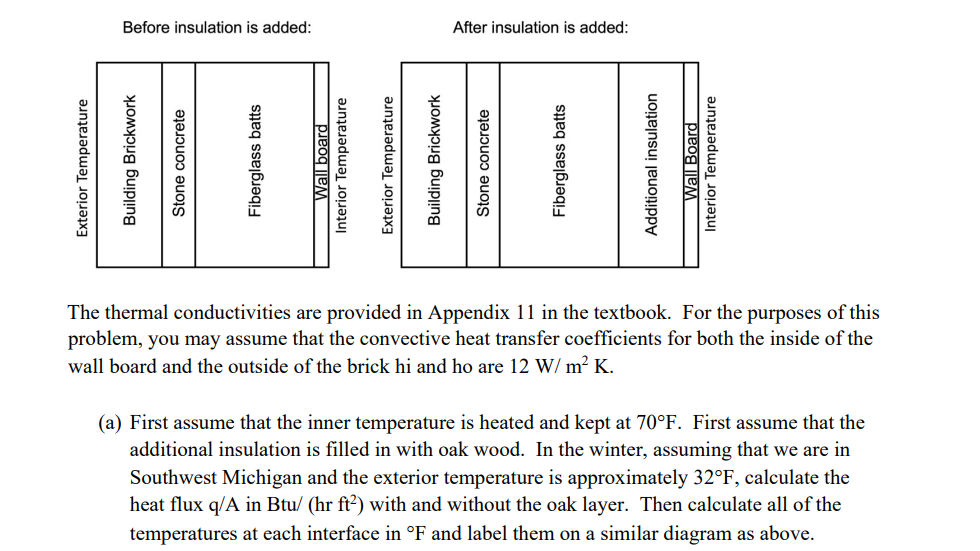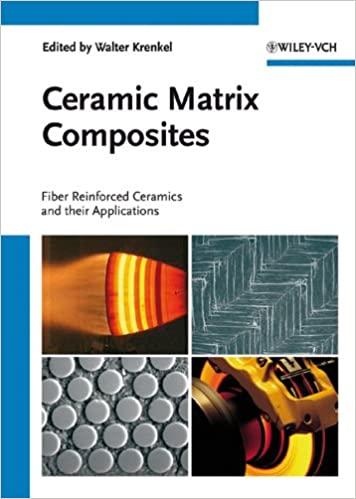Answered step by step
Verified Expert Solution
Question
1 Approved Answer
Thermal conductivity wall board: 0.028, fiberglass batts: 0.019, stonce concrete: 0.54, building brickwork: 0.4, oak layer: 0.12 hi=ho=12W/m^2K please calculate heat flux with and without

Thermal conductivity wall board: 0.028, fiberglass batts: 0.019, stonce concrete: 0.54, building brickwork: 0.4, oak layer: 0.12
hi=ho=12W/m^2K
please calculate heat flux with and without oak layer :) thanks will give like if correct
Before insulation is added: After insulation is added: The thermal conductivities are provided in Appendix 11 in the textbook. For the purposes of this oroblem, you may assume that the convective heat transfer coefficients for both the inside of the wall board and the outside of the brick hi and ho are 12W/m2K. (a) First assume that the inner temperature is heated and kept at 70F. First assume that the additional insulation is filled in with oak wood. In the winter, assuming that we are in Southwest Michigan and the exterior temperature is approximately 32F, calculate the heat flux q/A in Btu/(hrft2) with and without the oak layer. Then calculate all of the temperatures at each interface in F and label them on a similar diagram as above. Before insulation is added: After insulation is added: The thermal conductivities are provided in Appendix 11 in the textbook. For the purposes of this oroblem, you may assume that the convective heat transfer coefficients for both the inside of the wall board and the outside of the brick hi and ho are 12W/m2K. (a) First assume that the inner temperature is heated and kept at 70F. First assume that the additional insulation is filled in with oak wood. In the winter, assuming that we are in Southwest Michigan and the exterior temperature is approximately 32F, calculate the heat flux q/A in Btu/(hrft2) with and without the oak layer. Then calculate all of the temperatures at each interface in F and label them on a similar diagram as aboveStep by Step Solution
There are 3 Steps involved in it
Step: 1

Get Instant Access to Expert-Tailored Solutions
See step-by-step solutions with expert insights and AI powered tools for academic success
Step: 2

Step: 3

Ace Your Homework with AI
Get the answers you need in no time with our AI-driven, step-by-step assistance
Get Started


